The use of ammonia for cucumbers

Ammonia is an affordable and effective drug, and therefore every gardener should have it in his arsenal.... When growing cucumbers, the tincture has a beneficial effect on the development of the culture, and also provides it with the necessary prevention.
Properties
Ammonia is a colorless gas with a pungent and unpleasant odor. When a substance is combined with water, ammonia is formed, which is widely used in gardening, including for the cultivation of cucumbers. The main advantage of using a pharmacy preparation is the "supply" of nitrogen, which promotes the active production of chlorophyll and the growth of green mass. In addition, the tincture is very successful in preventing common diseases and helps in pest control. A completely budgetary and affordable drug is optimally absorbed by cucumbers, without creating surpluses and without transforming into nitrates harmful to the human body. Since ammonia has a medium alkaline reaction, it does not lead to soil acidification, which harms beneficial microorganisms.
It should be mentioned that the pungent smell of ammonia repels many pests, but since it is volatile, the effect of the drug is limited. The culture has to be processed immediately so that the ammonia composition does not evaporate, which means it does not become useless.

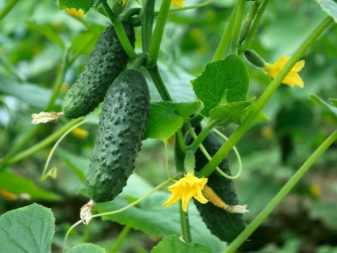
How to prepare the solution?
It is proposed to dilute ammonia for the care of cucumbers in different proportions, depending on the purpose of using the drug. According to the instructions, the combination of 50 milliliters of the drug and 4 liters of water is universal. To obtain top dressing or medicine of lower intensity in 10 liters of liquid base, you will need to dilute only a tablespoon of ammonia tincture. For a stronger remedy, on the contrary, a dessert spoon of a pharmacy product is kneaded in a liter of pure water. For spraying, no matter at what stage of crop development it occurs, 20 milliliters of ten percent ammonia and a bucket of water are always used.
Watering the seedlings will require 50 milliliters of active substance for the same amount of liquid base, and during abundant flowering, the amount increases to about 90 milliliters. When the cucumbers begin to form fruits, the fertilizer becomes less concentrated - 45 milliliters of ammonia per 10 liters of water. If the culture has a clear lack of nitrogen, then it will be necessary to significantly increase the rate - use 120 milliliters of ammonia per bucket. Finally, as a prophylaxis for nitrogen deficiency, 50 milliliters of ammonia diluted in the same amount of water is sufficient. If ammonia solution is used for root treatment, then each cucumber will need 1 liter of nutrient fluid.
The volume used for spraying is not limited by anything - it is only necessary to ensure that both shoots and foliage are evenly covered.
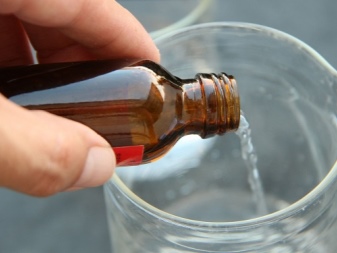
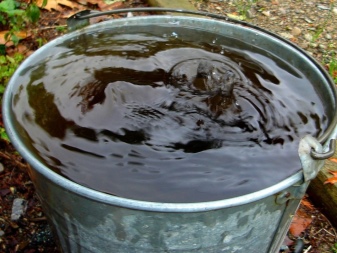
How to spray cucumbers for disease?
Spraying with ammonia is unlikely to completely destroy the disease, but such a treatment will be an excellent prevention of fungal and bacterial diseases in the garden. Primary processing is carried out even before the planting of cucumbers - the earth is spilled with a high concentration liquid during digging.The next time, reducing the dosage of ammonia, it is necessary to pour about half a glass of solution into each well, adhering to the recipe for combining 10 milliliters of the product and 10 liters of water. In the future, it is correct to spray cucumbers for diseases every two weeks. If the disease has already overtaken the cucumbers, then the damaged lashes are necessarily destroyed outside the site, and the remaining leaves and stems are sprayed with a mixture of 50 milliliters of ammonia and 10 liters of water. By the way, it also makes sense to disinfect the inoculum in a pharmacy solution.
It is worth mentioning that yellowing of the leaves does not always indicate a disease in cucumbers - sometimes it is just one of the symptoms of a lack of nitrogen, which is quite easily solved. Despite the fact that the plates are unlikely to turn green back, they should not be removed, since strong thinning can destroy a weakened bush. Damaged leaves, on the other hand, are immediately cut off at the base of the stem with a disinfected instrument.
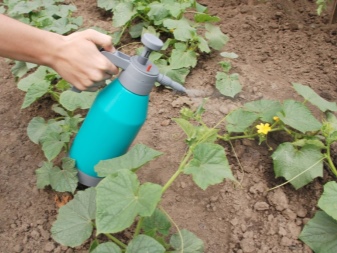
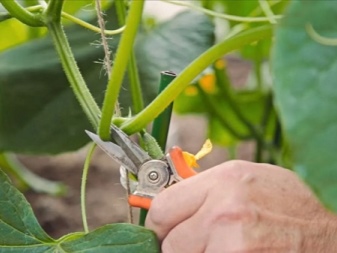
How to use against pests?
The list of uses for cucumbers in the garden includes protection against common pests... For example, ammonia plays an important role in the fight against insects that cannot stand its pungent smell: aphids, bear, wireworm and others. A homemade insecticide should be made clearly according to the instructions and immediately used for its intended purpose. So, you can apply a mixture of 55 milliliters of ammonia tincture, 150 grams of laundry soap particles and 10 liters of settled water. If desired, it is proposed to replace the bar with liquid tar soap, and first bring the water to a boil. A dosage of 100 grams of soap shavings per 1 liter of boiling water and 50 milliliters of twenty-five percent ammonia is also possible. The mixture is mixed well and used for spraying. The presence of soap shavings will allow the drug to "linger" for a long time on the leaf blades.
Another option involves diluting 10 milliliters of pharmacy nitrogen in 10 liters of liquid base. The finished product is used for root treatment so that each copy receives 500 milliliters of the drug. This method is especially popular in the fight against wireworms. In principle, in a standard 10 liter bucket of water, you can simply dilute 4 tablespoons of ammonia. The ready-made mixture is suitable for root treatment, but it should be applied immediately after watering. As a result, each lash should receive about 500 milliliters.
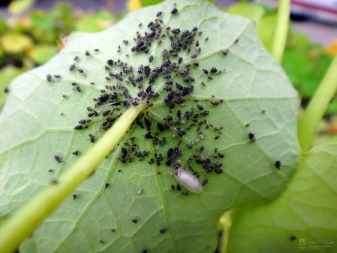

To get rid of ants outdoors, you can try treating the nest with a highly concentrated solution. Also, a cotton pad soaked in the drug should be placed in a wormhole if these pests bother the gardener especially. It is worth mentioning that the solution to which soap shavings are added can be used not only for spraying plants, but also for direct wiping of leaf plates. To enhance the action of drugs against aphids and, by the way, against diseases, treatment should be alternated with feeding with a mixture of a liter of water, half a glass of milk and a teaspoon of iodine.
A similar recipe is proposed for fighting flies: a tablespoon of ten percent ammonia and 200 milliliters of milk are diluted in 10 liters of water. The resulting mixture is immediately used to spray the crop: it provides it with nutrition and drives away the pungent smell of insects. It is also possible to supplement ammonia with boric acid and potassium permanganate. In a bucket of water, 2 tablespoons of ammonia, half a teaspoon of acid, previously diluted in water at a temperature of 50 degrees, and manganese potassium are mixed. The last ingredient is also diluted in a separate container, and the powder is added to the water in stages in order to obtain a not too saturated color and high concentration, and as a result, not to burn the sheet plates.
An alternative to potassium permanganate is iodine or brilliant green in the amount of 10 drops. The ready-made mixture is used for spraying plantings.
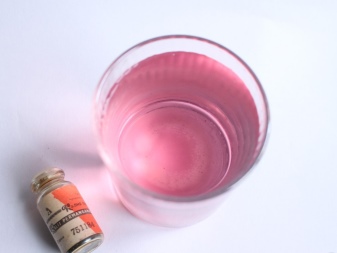

Use as top dressing
You can feed the cucumbers with ammonia in two ways: root and foliar. The first option is usually chosen if the culture is developing slowly, and the second - if it needs emergency "nitrogen" intervention. The amount of fertilizer used should be maximized at the stage of green mass development and reduced before flowering and fruiting.
Root
If root treatment is chosen for cucumbers, then the bush should be watered directly under the root, and the water should form a noticeable trickle. Fertilizing the culture is worth a universal solution. You can water the garden in this way after the seedlings take root and start branching, but you still need to wait for the appearance of 4-5 full-fledged leaves. The frequency of application of the nutrient solution is at first once every 2 weeks, and then once a month.
The need to use ammonia is evidenced by the yellowness of the leaf blades, thinning of the stems, and slow development. The nitrogen contained in it is especially important at the stage of crop growth, when the green mass increases. If the lashes grow slowly, then the nitrogen-containing composition is supplemented with phosphorus fertilizers.
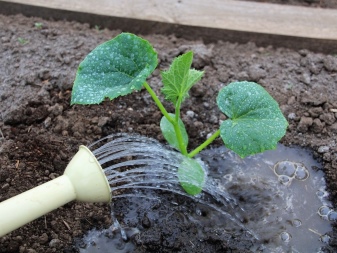
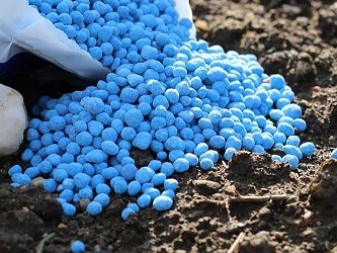
Foliar
The spray gun is not particularly suitable for processing lashes, therefore foliar processing, that is, spraying, cucumbers is more convenient to carry out using a regular watering can. In the open field, it is recommended to feed the crop with a low concentration fertilizer. The procedure should be carried out on a cool, cloudy and calm day, otherwise the nutrients either will not get onto the leaf blades at all, or they will immediately evaporate. It is best to work either early in the morning or late in the evening. For foliar feeding carried out in a greenhouse, it is required to dilute a concentrated solution of ammonia. Before starting the procedure, the soil should be thoroughly moistened with clean water heated in the sun to room temperature.
It is necessary to clarify that the average rate for the use of ammonia is once a week... If the crop is clearly deficient in nitrogen, then the procedure is carried out every three days until its content is balanced. It is allowed to stop feeding well-developed cucumber lashes at the end of June, without waiting for the ovaries to peck. In general, the frequency of use and dosage of the drug are largely determined by the state of the culture.
Gardeners also recommend using a mixture of 15 milliliters of ammonia, the same amount of liquid soap and 5 liters of water at the initial stage of ripening vegetables.
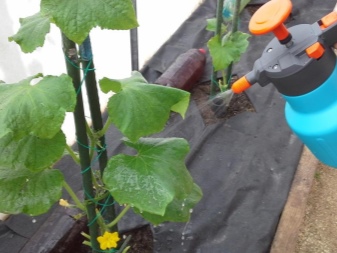

Precautionary measures
Since ammonia has significant toxicity and increased volatility, the ingestion of a large amount of its vapors into the human body can lead to negative consequences, up to and including poisoning. It all starts with nausea, developing into vomiting and sometimes accompanied by damage to the mucous membranes. This explains why it is so important to take precautions when interacting with this drug. Landing handling should be carried out in protective equipment, consisting of at least a respirator, goggles and latex gloves. To avoid splashing on your clothes, you should use an apron, and the panama will effectively hide your hair.
If ammonia is sprayed in a greenhouse, then the process should be accompanied by the opening of all vents and doors, as well as raising the canopy so as not to be poisoned by ammonia vapors. The vegetables plucked from such lashes must be thoroughly washed. It is important to ensure that the solution does not get on the wires or decorative trim, as this will provoke their damage.... When spraying outdoors, stand on the windward side. Of course, the drug should be stored in a place inaccessible to pets and small children. If after the procedure a slight ailment appears, then it will be enough to drink warmed milk, but more serious symptoms require the help of doctors.The substance that gets on the skin is immediately washed off with plenty of water.
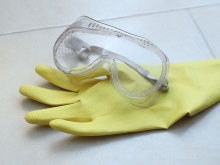
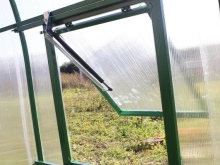
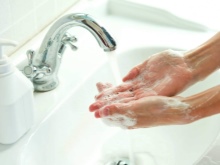













The comment was sent successfully.